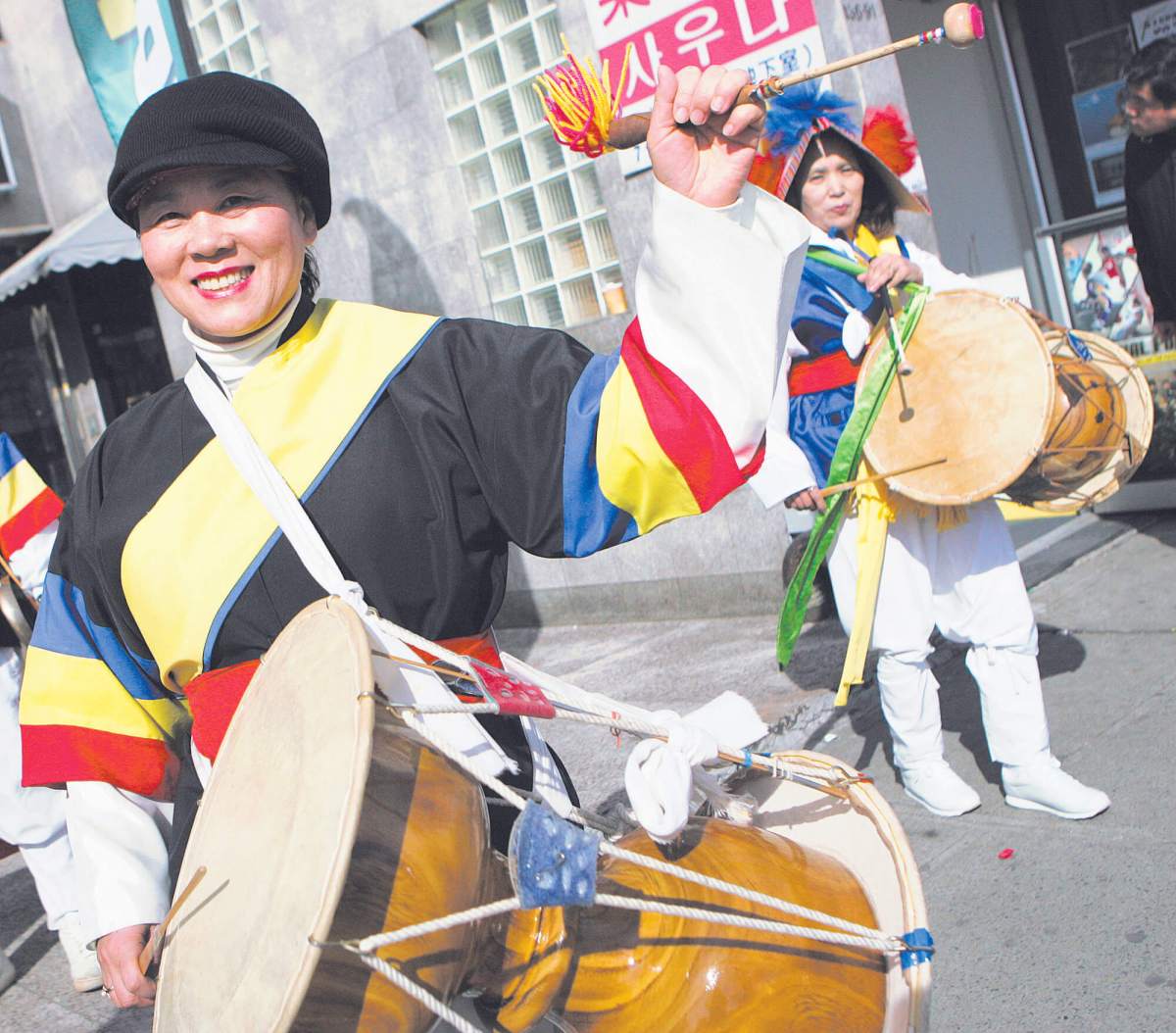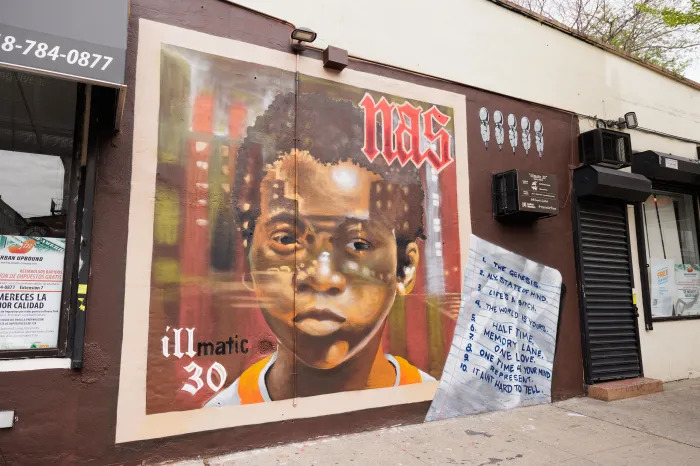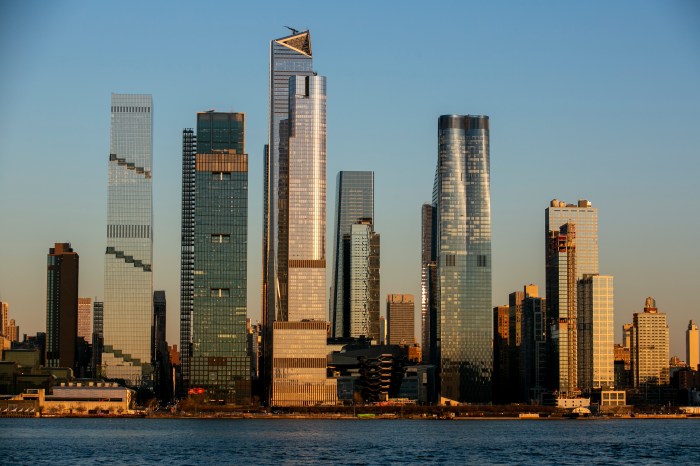By Connor Adams Sheets
Flushing’s diverse population will ring in the first day of the Year of the Rabbit on Thursday, joining hundreds of millions of people across the world in celebrating the lunar New Year.
The holiday is only part of the fun, though, as extensive preparations for downtown Flushing’s massive Lunar New Year Parade are well underway.
Organizers expect the Feb. 12 parade, the neighborhood’s largest and most anticipated annual celebration, to be a grander, more inclusive display than ever before.
The parade will feature all that attendees have come to expect of it: dancing, music, great food, packed streets and loud fireworks. Organizers say it is one of the best ways in the city to get a taste of what makes Asian culture unique.
“The parade itself is a kind of unique celebration style. You have two choices: One is to participate in the parade, and one is to view the parade,” Fred Fu, president of the Flushing Development Center and a longtime organizer of the parade, said. “We try to have a lot of events for the Lunar New Year so people will come out and celebrate and have dinner and have a great time.”
But the Lunar New Year has not always drawn parades of thousands of multicultural marchers, spellbound spectators and fabulous floats to the bustling downtown district.
In fact the fete, the most significant of the annual holidays in Chinese and other Asian cultures, grows in size and scope every year, and organizers say this year’s event promises to accommodate more groups from a wider range of backgrounds than ever before.
And, in what will be a distinctive departure from earlier iterations of the family-friendly affair, the groups will form a cohesive unit of diversity in a way that was once nearly unimaginable.
Downtown Flushing’s Lunar New Year has matured into an extraordinary, all-inclusive bonanza. From its humble beginnings, when flag-bearers representing different countries and groups jockeyed to out-shout each other as they careened through the streets, it has morphed into an organized procession to ring in the holiday while showing off the integrated nature of one of the world’s most diverse neighborhoods.
Ever since Korean residents — many of whom came to the neighborhood years after the first major wave of Chinese immigrants arrived here — began to take a major role in the parade, there has been a de facto segregation of participants. Toward the end of the revelry the column of bodies always split into two streams, one populated mostly with Chinese people, the other with Korean, each headed for their own nationality’s party.
This year the parade will for the first time be too much a reflection of the true nature of Flushing’s wide ethnic spectrum to allow for such a divergence, according to organizers. This time around, it will feature representatives of cultural and racial groups that have never held prominent roles in the Asian-dominated parade, according to Linda Sun, spokeswoman for state Assemblywoman Grace Meng (D-Flushing). Though at its end the parade’s participants will split up for the two separate Korean and Chinese parties, people of all stripes will march until its conclusion as one mass.
“African-American groups and Italian-American groups will be marching in the parade with floats and everything,” Sun said. “In previous years it’s been mostly just Chinese and Korean groups, and the parade route would split into two groups, and the Chinese group went one way and the Korean group would go a different route. This year they’re stopping that and they’re all just going to go one route.”
The Flushing version of the Lunar New Year celebration started with a dedicated cadre of Chinese immigrants who were intent on keeping the treasured tradition alive in their new home.
It grew by leaps and bounds, but for many years there was tension between the Chinese, Korean and other communities. A decade ago there was still bad blood between some of the groups, who vied against one another for most attention during the parade.
But its current organizers put an end to the hostility, and now even supporters of the Falun Gong, once a less-than-welcome presence in the annual Flushing parade, are able to march peacefully through the streets of Flushing.
By last week more than 30 cultural groups had applied to take part in the festivities, and organizers expected that number to rise as the big day approaches.
Meng, who has been a big supporter of the Lunar New Year Parade for years, is leading a charge, as she has every year since she took office in 2008, to get the city’s school system to declare the Lunar New Year an official day off for the city’s schoolchildren.
Many people of Asian background stay up late with family and friends celebrating on the night before the Lunar New Year Day, like Americans who fight to keep their eyelids open to watch the ball drop at midnight Jan. 1 in Times Square under the guidance of Dick Clark, and now Ryan Seacrest. Meng said that leaves many schoolchildren groggy in the morning, so she hopes she can entice the public school system to offer some relief to the hundreds of thousands of city youths who celebrate the Lunar New Year.
“The Lunar New Year is actually the most important holiday in Asian culture. It’s celebrated by Chinese, Korean and Muslim people as well,” Sun said. “From [Meng’s] point of view, she’s asking for fair treatment so people in our culture will be able to celebrate the most important day in their culture, as Italian-Americans are able to celebrate Columbus Day and African-Americans are able to celebrate, for instance, Martin Luther King Day.”
Meng was scheduled to host a rally at 4 p.m. Feb. 2 in front of PS 244 at 137-20 Franklin Ave. to ask Schools Chancellor Cathleen Black and Mayor Michael Bloomberg to create the school holiday.
Meng will be joined by elected officials including city Councilman Peter Koo (R-Flushing), state Assemblyman David Weprin, and State Sens. Toby Stavisky (D-Whitestone) and Daniel Squadron (D-Manhattan), as well as the presidents of Flushing-based Chinese and Korean parents’ associations and 30 to 40 student supporters.
Anyone interested in participating in the parade or who would like to donate to its organizers should call the Flushing Chinese Business Association at 718-353-2320.
Reach reporter Connor Adams Sheets by e-mail at csheets@cnglocal.com or by phone at 718-260-4538.






























